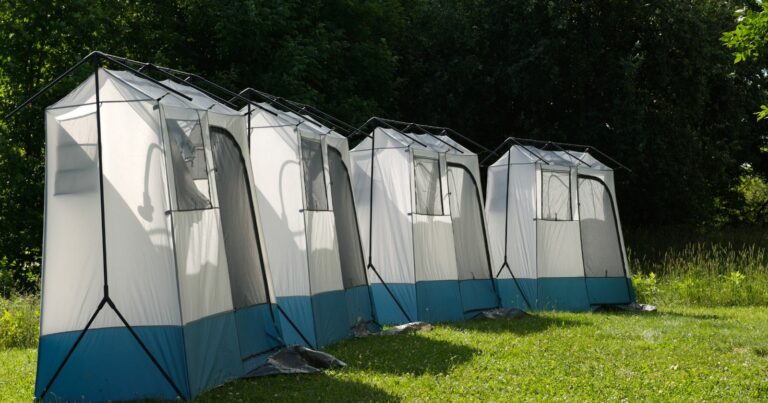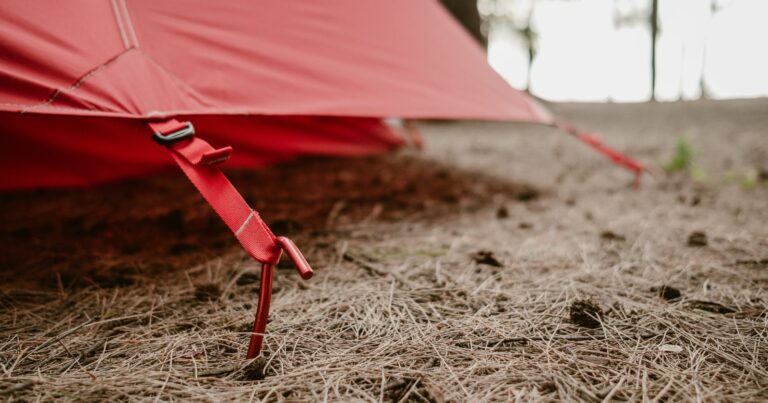Do You Need an Inverter for Solar Panels While Camping?
Nothing beats the freedom of lounging at your campsite while powering your devices using the sun. But is plugging your phone into those convenient solar panels enough to keep all your gadgets juiced up? Or do you need to level up your solar charging system with an inverter for more power?
If you’ve ever tried to run a laptop or mini fridge off your solar panels while camping, you’ve probably faced some frustrating limitations. While solar power offers a sustainable way to meet electricity needs off-grid, getting the right system setup takes some careful thought.
In this article, we’ll walk through the factors that determine whether an inverter is necessary for your solar panel kit. We’ll look at power requirements for different devices, solar system types, and the pros and cons of different inverter options.
With the right knowledge, you can build your perfect solar charging station to keep all your essential and comfort devices powered no matter how deep into the wilderness you venture. Read on to learn how to harness the full potential of solar to make your next camping trip both sustainable and comfortable.
When the sun is shining, solar panels can meet all your electricity needs off the grid – with the right supporting equipment. Let’s dive into solar inverter options so you can decide if your system needs this added component. Soon you’ll be a master of powering devices from the sun, leaving you to focus on more important things like fishing, stargazing, and laying back in your camp chair after an epic day on the trail.
Assess Your Electrical Power Needs
First, take stock of what kind of devices and appliances you want to power while camping and glamping. This determines how robust your solar system needs to be.
Low Power Needs
If you just need to charge and run small personal electronics like phones, tablets, cameras, and portable speakers, your power needs are relatively low. For these devices, a basic solar panel kit without an inverter may suffice.
Typical load: 10 – 50 watts
Example devices: Phone, action camera, e-reader, headlamp, Bluetooth speaker
Medium Power Needs
Larger electronics like laptops and electric coolers have higher power demands. They may be compatible with solar alone, but often benefit from an inverter for faster charging.
Typical load: 50 – 200 watts
Example devices: Laptop, LED string lights, electric blanket, portable fridge/freezer
High Power Needs
Appliances with motors or heating/cooling like microwaves and air conditioners are extremely power hungry. Running them off solar requires an inverter and large battery bank.
Typical load: 200+ watts
Example devices: TV, CPAP machine, microwave, power tools, coffee maker, AC unit
Consider the typical and peak power consumption of devices you want to run. That will determine if you can get by with solar panels alone or need to add supplemental gear.
Solar Panel System Types
The two main types of solar setups for camping are off-grid and grid-tied systems. The system you choose determines if an inverter is necessary.
Off-Grid Solar Systems
Off-grid solar panel kits are completely independent systems not connected to the electrical grid in any way. They require:
- Solar panels – Capture and convert sunlight into DC current electricity.
- Charge controller – Regulates power flow from panels to battery bank to prevent overcharging.
- Batteries – Store energy so power remains available overnight or on cloudy days.
- Inverter (often required) – Converts DC battery power into standard 120V AC power to run household electronics and appliances.
Off-grid systems allow powering devices away from hookups and infrastructure. But the power inverter is a crucial added component.
Grid-Tied Solar Systems
Grid-tied solar systems are designed to supplement electricity from the utility grid. They use:
- Solar panels – Generate DC current from sunlight to offset grid power usage.
- Inverter (sometimes) – Converts DC to AC to power devices directly. Often built into the solar panels.
- Grid connection – Feeds excess power back to grid. No battery bank is needed.
For grid-tied systems, an inverter may not be needed since the grid handles power conversion and storage.
Which System Do You Need?
Choose based on your main usage:
- Off-grid for powering devices completely independent of infrastructure. Requires batteries and inverter.
- Grid-tied for reducing electricity bills and providing backup power at home. May not need separate inverter.
- Hybrid system to combine independence and grid connectivity. Right inverter ties it together.
Evaluate your priorities like being off-grid, having backup electricity, or cutting utility bills before deciding on a solar panel system type.
Pure vs. Modified Sine Wave Inverters
If your solar application requires an inverter, two main options exist – pure and modified sine wave models.
Pure Sine Wave Inverters
Pure sine wave inverters produce smooth, continuous AC power that replicates the utility grid. Benefits:
- Safe for all electronics including sensitive devices.
- No interference with devices and quieter operation.
- More efficient energy conversion and battery life.
- More expensive but worth it for quality power.
Modified Sine Wave Inverters
Modified sine wave models output a less smooth waveform with pulsations. Drawbacks:
- Can damage or disrupt sensitive devices like medical equipment.
- Potential noise, efficiency, and interference problems.
- Cheaper upfront cost but may impact device performance.
For mission-critical devices, splurge on a pure sine wave inverter for clean reliable power similar to wall outlets.
What Size Inverter Do You Need?
Select an inverter with enough rated wattage to handle your loads.
- Add up device power draws to find total wattage needed.
- Factor in start-up surges which briefly require 2-3x the wattage.
- Choose an inverter that exceeds your total. At least 500-1000W is recommended for most setups.
- Pure sine wave inverters cost more for higher wattage but deliver quality power.
Right-sizing your inverter prevents overload and protects your appliances. Allow room for adding devices later too.
Get Equipped: Recommended Gear
Here are some top solar power station and inverter options for hassle-free off-grid power:
Entry-level:
- Inverter: Aims Power 1000W Pure Sine Wave Inverter
- Solar kit: Renogy 100W Mono Kit
Enthusiast:
- Inverter: GoPower 3000W Pure Sine Wave Inverter
- Solar kit: Renogy 200W Mono Kit
Off-grid expert:
- Power station: Bluetti AC300 + B300 external battery
- Solar: 4 x Renogy 100W panels
Invest in quality solar components and power management equipment for reliable off-grid electricity.
Get Camping – Your Devices Will Thank You
Imagine waking up refreshed in your tent after charging phones, cameras, and flashlights right off your solar panels. By understanding your power needs, choosing the right solar system and gear, and learning how inverters work, you can make off-grid living easy and enjoyable.
Follow this guide to build your dream solar power setup. Soon you’ll go from draining batteries to harnessing the sun’s abundant energy. Wherever your adventures take you – deep into the backcountry or just down the road – your devices will stay powered thanks to the magic of solar.
Frequently Asked Questions about Solar Power while Camping
Get answers to common questions about using solar panels and inverters while camping, RVing, or vanlife adventuring off the grid.
Q: Can I run a coffee maker with solar power?
A: Yes, but you need an adequately sized inverter and solar panel system. Estimate the wattage based on the coffee maker model and choose equipment that can handle the load.
Q: What size solar system do I need for an RV?
A: For RV solar, allow for 10-20 watts per square foot of panel. Get 200-400 watts per RV appliance you want to run. Have at least 200-400 amp hours of battery capacity. Size your inverter to handle the total load.
Q: How many solar panels are needed to run a refrigerator?
A: To run a fridge or mini fridge off solar, you’ll generally need 200-400 watts of solar panels feeding an inverter rated for the fridge’s starting and running wattage. Have at least 200 AH of batteries.
Q: Can I run a TV with solar power?
Yes, running a television off solar is completely doable. Use a pure sine wave inverter sized appropriately for the television wattage. Have enough battery capacity to watch for several hours without sunlight.
Q: Is a charge controller required for solar panels?
A: Yes, a charge controller is highly recommended whenever connecting solar panels to batteries so as to regulate voltage and charging rates. Preventing overcharge enhances safety and extends battery lifespan.
Q: What’s better – a wind turbine or solar for camping?
A: For portable renewable power while camping, solar panels usually make more sense than wind turbines. Solar generates quiet, emissions-free power at modest wind speeds. Ensure your site gets sufficient sun exposure.
Q: Can I run a portable AC unit with solar panels?
A: Yes, but you’ll need a large solar panel system of at least 500-1000 watts and an adequately sized pure sine wave inverter and battery bank. Expect to drain batteries quickly. Prioritize ventilation, shade, and fans to minimize AC needs.
With smart planning and proper gear, you can run most electronics and appliances off portable solar power systems while adventuring off-grid hassle-free.







